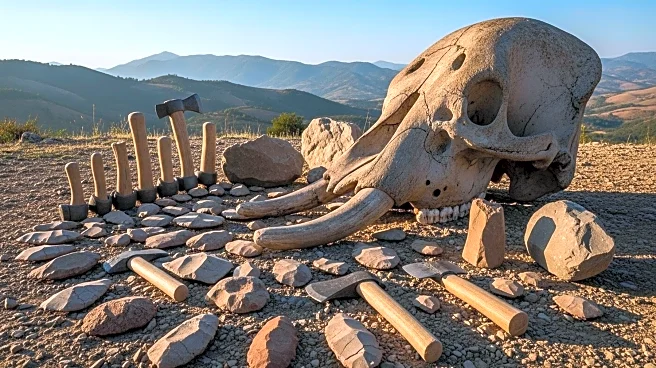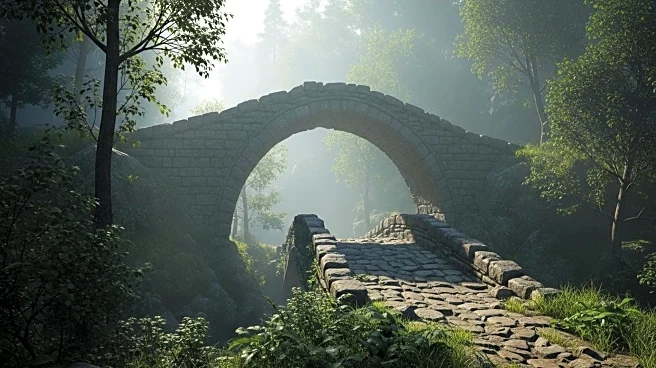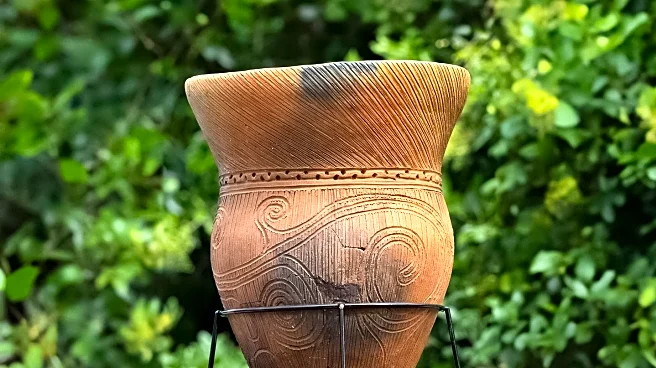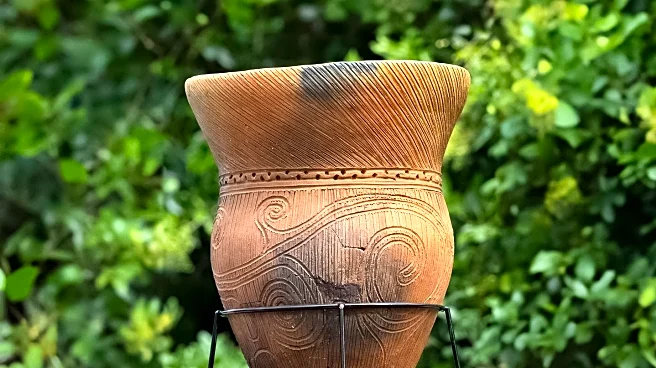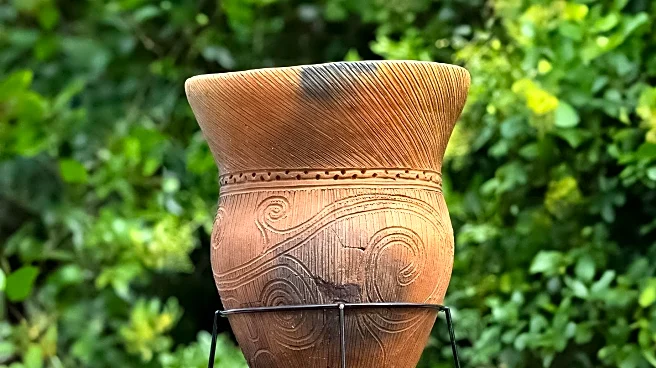What is the story about?
What's Happening?
Researchers from Sapienza University of Rome have uncovered evidence that early humans in Italy, approximately 400,000 years ago, butchered elephants for food and tools. The study, published in PLOS One, details findings from the Casal Lumbroso site near Rome, where over 300 skeletal fragments of a straight-tusked elephant, Palaeoloxodon, were discovered alongside more than 500 stone tools. The bones showed signs of deliberate breakage, indicating that early humans used blunt impacts to process the carcass. The absence of cut marks suggests smaller tools were used for soft tissue processing. This discovery highlights a consistent prehistoric strategy for resource use during warmer periods of the Middle Pleistocene.
Why It's Important?
The findings provide significant insights into the behavior and survival strategies of early humans in Europe. By demonstrating the use of elephants not only for food but also for tool-making, the study sheds light on the adaptability and resourcefulness of ancient hominins. This research contributes to the understanding of human evolution and the interaction between humans and their environment during the Middle Pleistocene. It underscores the importance of central Italy as a key region for studying early human activities and their impact on ecosystems.
What's Next?
Further research may focus on comparing these findings with other sites in central Italy to better understand the regional patterns of resource use by ancient humans. Archaeologists might explore additional sites to uncover more evidence of similar behaviors, potentially leading to a broader understanding of prehistoric human activities across Europe. The study could also prompt new investigations into the climatic conditions that influenced human survival strategies during the Middle Pleistocene.
Beyond the Headlines
The study raises questions about the ethical implications of resource exploitation by early humans and how these practices have evolved over time. It also highlights the cultural significance of tool-making and its role in human development. Understanding these ancient interactions between humans and their environment can offer valuable lessons for contemporary resource management and conservation efforts.
AI Generated Content
Do you find this article useful?
